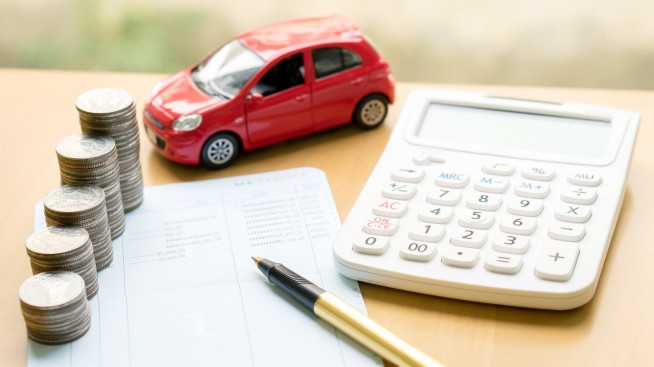How much should my car payment be?

If you’re buying a car, it will be helpful to understand how your car payment fits within your broader expenses. What’s right for you depends on your unique circumstances. When trying to answer, “How much should my car payment be?” it helps to understand how car payments are calculated, and estimate your loan offers to strategize a payment amount that aligns with your budget.
Understanding your car payment
Knowing how much your car payment should be starts with understanding how car payments are calculated. The mathematical formula isn’t quite as simple as X+Y=Z, however, using a car payment calculator will give you a sense of what your future payment may be.
To get a glimpse of what your auto payment might look like, have the following information handy to plug into the calculator:
- Down payment: Placing a down payment will reduce the amount you need to borrow, which in turn could reduce your monthly payment amount.
- Trade-in value: Like a down payment, you can potentially reduce your borrowed amount by trading in your car and deducting the trade-in value from the amount you borrow.
- Amount financed: This is the amount you’ll actually borrow, after any down payment and/or trade-in is subtracted from the price of the vehicle, and any fees or added costs are added. The amount financed will be the basis for your monthly payment.
- Credit score: Lenders will use your credit score to evaluate your general creditworthiness, using this number to inform their offers and determine interest rates. Higher scores, which indicate better creditworthiness and a lower risk to lenders, typically translate to lower interest rates.
Calculating your car payment
You can use a car payment calculator to estimate your monthly car payment and ensure it fits in your budget before visiting your local dealership. After basic information is input, the calculator will display details which may include:
- Monthly payment: This is the amount that you will pay monthly for the duration of the loan.
- Principal: This is the total amount of money you’ll be borrowing to purchase the vehicle.
- Total interest: This is the total amount of interest you’ll have paid over the loan's lifespan.
- Annual percentage rate (APR): This is the real cost of borrowing money expressed as an annual rate.
An important consideration in determining a loan’s payment amount is the length of the repayment term. So when deciding how long to finance your car, remember that if you take out a longer repayment term, your monthly payment amount will likely be lower but may lead to more interest paid and a higher total cost over time.
Seeing what you prequalify for
To get an even better idea as to how much your car payment amount may be, look for a lender that will allow you to prequalify for financing. Note that prequalification is not a financing guarantee. However, it can provide you with an estimation of the amount you may be able to borrow.
Other car payment considerations
Remember, car payment calculators provide estimations. When the time comes for you to apply for your auto loan, lenders will review several other factors related to your financial health, such as debt-to-income ratio (DTI) to determine your loan options. Brush up on how auto loans work to get a clearer picture of the variables at play and better understand how much a car payment should be for you.
Note: In some cases, dealerships and car manufacturers offer incentives to help them sell more inventory. One incentive could be a 0% APR loan offer which may save you money, but could be restricted to certain vehicle models and shorter repayment terms. Consider learning the pros and cons of 0% APR financing before making your decision.
What percent of monthly income should go toward a car?
When figuring out what your car payment should be, get a measure of your monthly income and expenses to see how flexible your budget is. One strategy is to use the 50/30/20 rule, which divides your expenses into “buckets,” broken down as follows:
- 50% towards needs: This includes housing, healthcare, food, clothing, transportation, and any other necessities.
- 30% towards wants: This includes entertainment, dining out and other non-essential spending.
- 20% towards goals: This includes travel, savings accounts and any other financial goals you may want to chip away at.
A car payment typically falls under the “needs” category under daily transportation. After you deduct your other “needs” expenses from your income, you should be able to see how much is "left over” for your prospective car payment. You can also use a car payment calculator to compare the “left over” amount to different monthly payment options, including the terms that’ll help pay off your loan the fastest.
In the end, there may be no one-size-fits-all answer as to what percentage of income should go to a car. While some might suggest that the total cost of your car be within 10-15% of your income, that may not fit your finances or needs. Rather, it may be better to assess your individual circumstances, create a budget and then decide how much you should spend on a car payment.
What’s a good car payment?
A “good” car payment is a subjective thing, and the average monthly car payment in the U.S. may not necessarily represent your personal situation. A better answer may be to determine what a good car payment is for you, which generally comes down to whatever amount fits your budget. Don’t forget, however, your car payment is only a part of the total cost of car ownership. Consider how other factors such as gas, insurance and routine maintenance will align with your budget as well.
3 Tips to help reduce your car payment
If the payment amounts you’re seeing are above the maximum your budget allows, there are some things you may be able to do:
- Lower the amount you’re borrowing: Finding a less expensive vehicle could reduce the amount you need to borrow. You might also consider making a larger down payment, bringing a trade-in to the table, or trying to negotiate a lower price with your car dealer. All of these options may help reduce the amount you need to borrow.
- Improve your credit score: Lenders may be more likely to offer you better interest rates or larger loans with a better credit score. Focusing on improving your debt-to-income ratio and making sure you pay your bills on time are two ways to potentially improve your credit.
- Keep shopping: If you’re unable to find a payment amount that fits within your budget, you may want to continue shopping around.
In summary
When asking, “How much should my car payment be?” there are several factors to consider. Understanding how your car payments are calculated and how to set an effective budget can go a long way to helping you determine the maximum payment you can afford. In the end, a good car payment is unique to your own financial situation. If you’re unable to find a car payment that works for you, consider taking steps to improve your credit or consulting with an auto loan professional.



